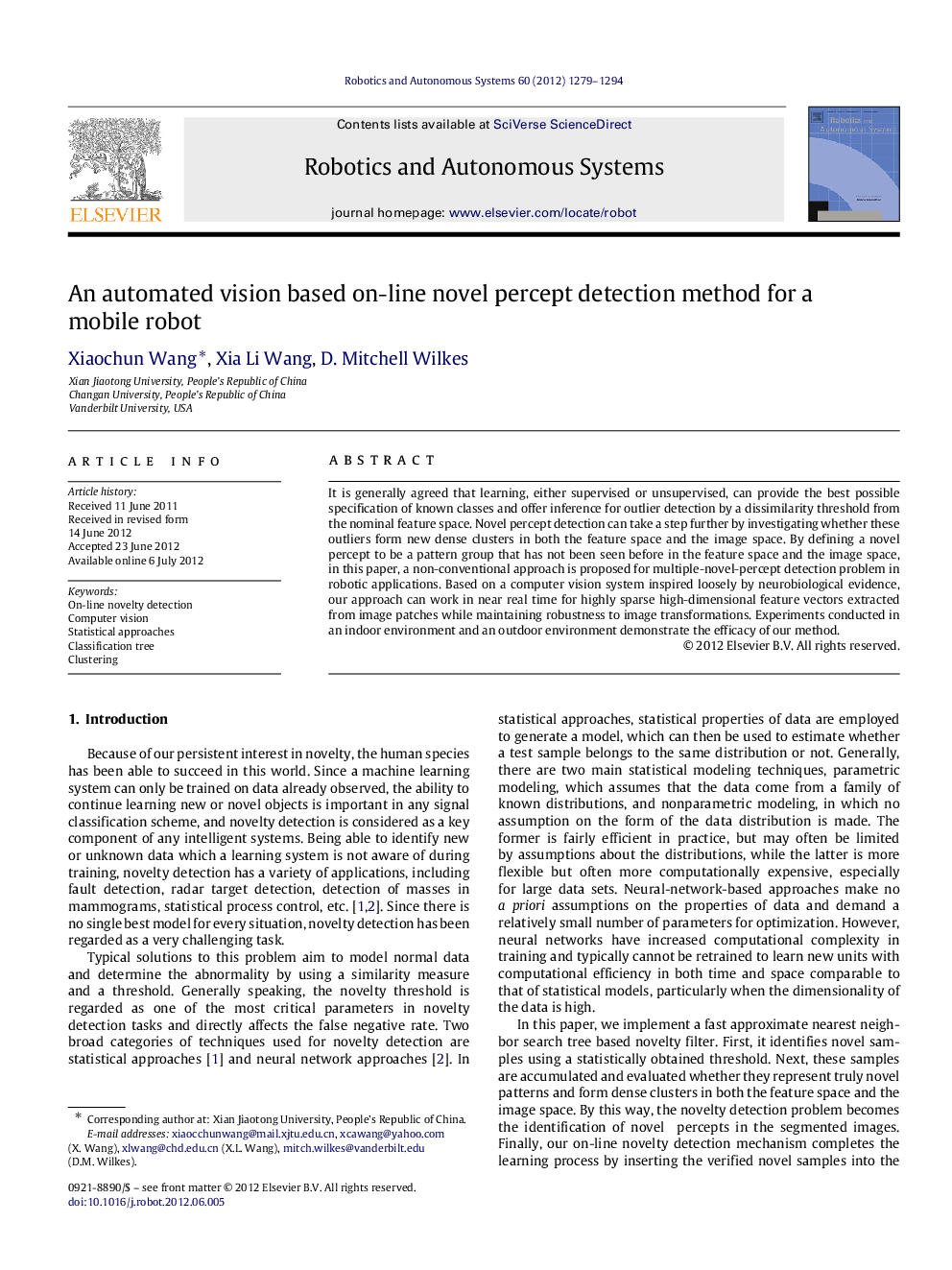| Article ID | Journal | Published Year | Pages | File Type |
|---|---|---|---|---|
| 411934 | Robotics and Autonomous Systems | 2012 | 16 Pages |
It is generally agreed that learning, either supervised or unsupervised, can provide the best possible specification of known classes and offer inference for outlier detection by a dissimilarity threshold from the nominal feature space. Novel percept detection can take a step further by investigating whether these outliers form new dense clusters in both the feature space and the image space. By defining a novel percept to be a pattern group that has not been seen before in the feature space and the image space, in this paper, a non-conventional approach is proposed for multiple-novel-percept detection problem in robotic applications. Based on a computer vision system inspired loosely by neurobiological evidence, our approach can work in near real time for highly sparse high-dimensional feature vectors extracted from image patches while maintaining robustness to image transformations. Experiments conducted in an indoor environment and an outdoor environment demonstrate the efficacy of our method.
► An efficient method to perform online multiple novel percept detection is proposed. ► It relies on a fast nearest neighbor search tree and a threshold selection method. ► Both color and texture features are used to form precepts from an image sequence. ► Multiple novel precepts can be detected and added to the system in near real time. ► The proposed method is good for novelty detection tasks in autonomous system design.
